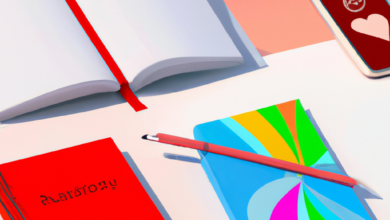Choosing the Perfect Saw for Every Woodworking Cut

Woodworking is a craft that requires precision and skill. Whether you’re a professional carpenter or a DIY enthusiast, having the right tools is essential to achieving the perfect cut. One of the most important tools in any woodworker’s arsenal is the saw. With so many different types of saws available, it can be overwhelming to choose the right one for each woodworking project. In this article, we will explore the various types of saws and provide valuable insights to help you make an informed decision.
The Crosscut Saw: Perfect for Clean and Accurate Cuts
When it comes to making clean and accurate cuts across the grain of the wood, the crosscut saw is your best friend. This type of saw features sharp teeth that are angled to cut through the wood fibers cleanly, resulting in a smooth finish. Crosscut saws come in different sizes, with larger ones being ideal for cutting thick boards and smaller ones for more delicate work.
For example, if you’re building a bookshelf and need to cut several shelves to size, a crosscut saw would be the perfect choice. Its sharp teeth will ensure that each cut is precise and clean, allowing the shelves to fit together seamlessly.
The Rip Saw: Ideal for Cutting Along the Grain
When you need to cut along the grain of the wood, a rip saw is the tool for the job. This type of saw has fewer teeth per inch compared to a crosscut saw, but the teeth are designed to remove material quickly. The aggressive cutting action of a rip saw makes it perfect for cutting through thick boards or making long, straight cuts.
Let’s say you’re building a wooden fence and need to cut several long boards to size. A rip saw would be the ideal choice as it can quickly and efficiently cut through the boards, saving you time and effort.
The Dovetail Saw: Perfect for Intricate Joinery
When it comes to intricate joinery work, such as creating dovetail joints, a dovetail saw is a must-have tool. This type of saw features a thin blade with fine teeth, allowing for precise and delicate cuts. The narrow blade also provides better control, making it easier to follow the layout lines.
For example, if you’re building a jewelry box and want to create dovetail joints for added strength and beauty, a dovetail saw would be the perfect choice. Its fine teeth and narrow blade will allow you to make precise cuts, resulting in a tight and visually appealing joint.
The Jigsaw: Versatile and Perfect for Curved Cuts
When it comes to making curved cuts or intricate shapes, a jigsaw is the go-to tool. This versatile saw features a reciprocating blade that moves up and down rapidly, allowing for precise and controlled cuts. Jigsaws come with different blade types, including fine-toothed blades for cutting wood and coarse-toothed blades for cutting metal or plastic.
For instance, if you’re working on a woodworking project that requires cutting out a decorative pattern or making curved cuts, a jigsaw would be the perfect tool. Its ability to maneuver easily and make intricate cuts will help you achieve the desired result with ease.
The Miter Saw: Perfect for Angled Cuts
When it comes to making angled cuts, a miter saw is the tool of choice. This specialized saw allows you to make precise cuts at various angles, making it perfect for projects that require accurate miter joints or angled cuts.
For example, if you’re building a picture frame and need to make precise 45-degree cuts at each corner, a miter saw would be the perfect tool. Its ability to make accurate angled cuts will ensure that each corner fits together perfectly, resulting in a professional-looking frame.
Summary
Choosing the perfect saw for every woodworking cut is essential to achieving professional results. By understanding the different types of saws and their specific uses, you can make an informed decision and select the right tool for each project. Whether you need to make clean crosscuts, rip along the grain, create intricate joinery, make curved cuts, or achieve precise angled cuts, there is a saw designed to meet your needs.
Remember, the crosscut saw is perfect for clean and accurate cuts across the grain, while the rip saw is ideal for cutting along the grain. The dovetail saw is a must-have for intricate joinery work, and the jigsaw is versatile and perfect for curved cuts. Finally, the miter saw is the go-to tool for making precise angled cuts.
So, next time you embark on a woodworking project, choose the perfect saw for the job and let your creativity shine!




